Environment
Machinery
Glorious homecoming
Viking Glory is poised to start making the rounds in the Baltic Sea
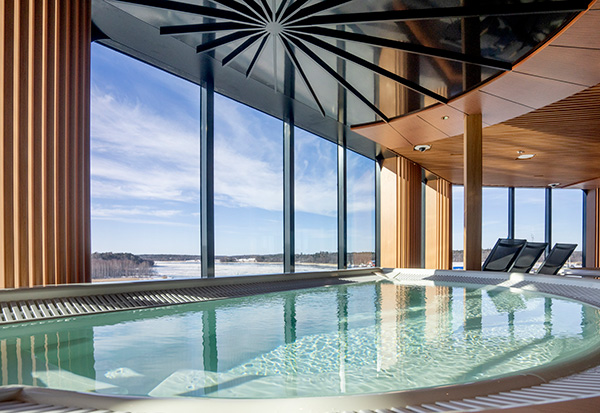
Viking Line’s new vessel, Viking Glory, was christened in the Port of Turku on 28th February 2022. The company’s new flagship sailed for the first time to Mariehamn and Stockholm the following day.
VIKING GLORY – TIMELINE
3/2016 - A letter of intent is signed with the Chinese shipyard XSI
8/2018 - Construction on the vessel begins in Xiamen
5/2019 - In a public vote, “Viking Glory” is chosen as the name of the new vessel
6/2019 - The keel-laying ceremony at the shipyard
1/2021 - Viking Glory is launched
6/2021 - The vessel passes its first sea tria
l
11/2021 - The vessel passes its second sea trial
12/2021 - Viking Glory starts its journey home to Turku
3/2022 - The vessel launches service on the Turku–Mariehamn–Stockholm route
Or, actually, Viking Glory already has
quite a bit of sailing under her belt.
Prior to christening ceremony, Viking Glory
completed a five-week journey from China
to Finland, reaching Turku on February
6th. The ship had started its journey from
Xiamen,
China, in December 2021. The
journey took Captain Ulf Lindroos and his
crew of 40 via e.g. the Suez Canal and
the Strait of Gibraltar before ending up in
the Baltic Sea, which will be the operative
environment for the new vessel.
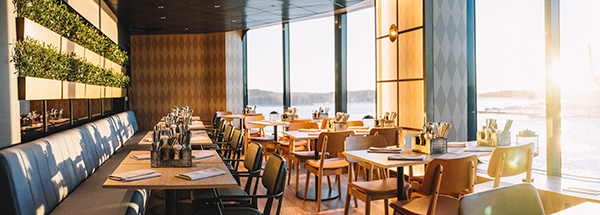
Viking Glory was built by the shipyard
Xiamen Shipbuilding Industry Co,
Ltd. Commissioned in April 2017, the ship
came with a price tag of approximately
EUR 225 million.
The new flagship replaces Amorella,
which is now moving to Helsinki, and will
increase Viking Line’s passenger capacity
on the Turku–Mariehamn–Stockholm
route by about ten per cent. The vessel handles about 60 per cent more cargo
than its predecessor.
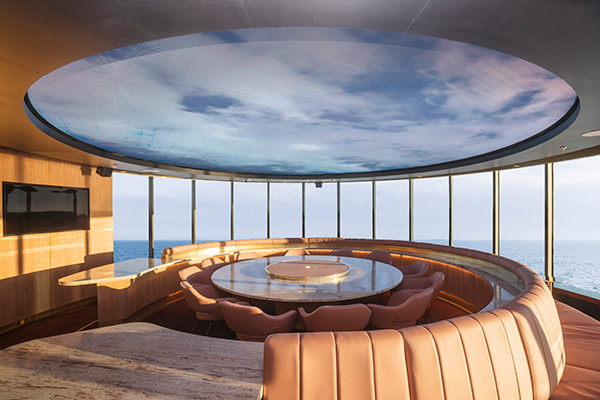
Home sweet Turku
Viking Line’s president and CEO Jan Hanses
comments that the Turku route is very
important for Viking Line as well as for
passenger and cargo service between Finland
and Sweden.
“We are extremely proud that we
once again can take a vessel that represents
the very latest in new advances to
Turku – one that both improves the level of
service on the route and reduces the environmental
impact. There is great interest in
Glory, and sales have gotten off to a really
good start,” says Hanses.
Hanses is very satisfied that the company
succeeded in bringing home Viking
Glory although, as he says, there was also
“doubt in the air”.
“This fantastic vessel exceeds all my
expectations. It represents a brand-new
generation of vessels and highlights the
company’s origins in the archipelago in a
fine way,” says Hanses.
Viking Glory’s innovative solutions
make it one of the world’s most climatesmart
passenger ships. As Viking Glory
gets going, the environmental impact of
Viking Line’s vessels on the Turku–Mariehamn–
Stockholm route will be further
reduced.
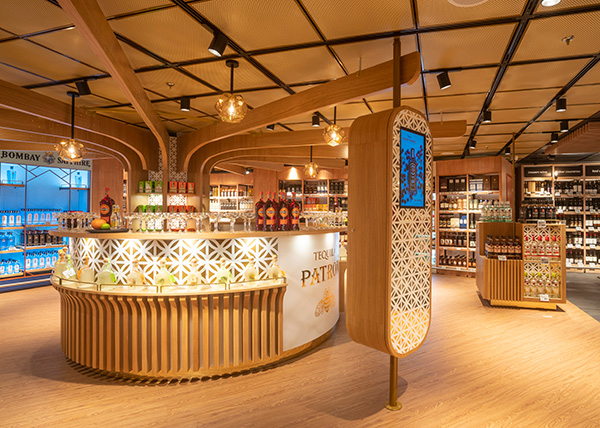
For example, Viking Glory has 66 per
cent more cargo capacity than Amorella
but is expected to produce more than 25
per cent fewer emissions than its predecessor.
Viking Glory and Viking Grace, which
began serving the route in 2013, are now
the two most climate-smart vessels sailing
the Baltic Sea.
Environmental edge
Viking Line’s sustainability manager Dani
Lindberg points out that efficiency, environmental
requirements as well as the
future were all taken into consideration
in an entirely new way when Viking Glory
was being planned.
“Most of our sustainability work
involves different solutions that passengers
don’t notice, like the vessel’s technical
solutions, which have seen rapid
advances. Ten years ago, Grace was the
world’s most environmentally-friendly passenger
ship and now Glory, which is bigger,
will use about ten per cent less fuel,”
Lindberg says.
Viking Glory is one of the first vessels
in the world to use Wärtsilä’s 31DF dualfuel
engines and run on liquefied natural
gas (LNG). They enable optimization
of fuel use but produce no sulphur emissions
at all. Furthermore, they produce
fewer carbon dioxide emissions than do
diesel engines.
Project Manager Kari Granberg,
who is in charge of the new construction
at Viking Line, says that the vessel’s six
31DF engines feature the lowest fuel consumption,
but at the same time, have the
highest cylinder output in their segment
(550 kW/cylinder).
Recovering waste cold
Viking Glory will also, as the first in the
world, recover the waste cold from the use
of LNG and recycle it for use in cold counters,
cold rooms, and other special rooms.
“Today, recovery of waste heat is
already common, but to recycle waste
cold for the purposes of refrigeration appliances
and cold rooms is an innovative and
highly climate-smart solution,” Granberg
says, adding that Viking Line has carried
out development work in collaboration
with Wärtsilä, Projektia and Deltamarin.
Captain Ulf Lindroos says that when
Viking Grace started running on LNG,
sulphur and particulate matter emissions
were reduced by 85 per cent while greenhouse
gas emissions were reduced by 15
per cent compared to oil.
“Like Grace, Glory will also run on
biogas or synthetic fuels produced using
renewable energy when these are available
in the future,” says Lindroos.
Making moves
As Viking Glory kicks off operations, this
marks also the first time when a passenger
ship of this kind utilises the Azipod propulsion
unit manufactured by ABB as a means
of saving time and energy in terms of ship
manoeuvring: the system facilitates faster
turns in the ports and a hull design with approximately 8% less water resistance
than with a traditional propeller system.
Dani Lindberg confirms that Glory’s
Azipod propellers and other technical
innovations save considerable time in port,
giving the ship leeway in terms of keeping
to the timetable.
“Every minute saved in port results in
fewer emissions during the sea journey. We
also do daily route planning, which means
we modify our journey based on weather
conditions and timetables,” adds Lindberg.
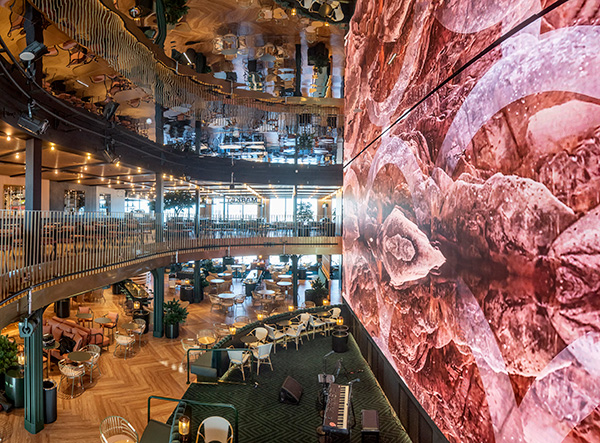
Championing responsible sailing
Gustaf Eklund, who is Head of Development
at Viking Line and in charge of developing
the concept for the new ship, comments that Viking Line endeavours to be a
forerunner of responsible navigation – and
this goal is reflected in the design and construction
of the ships.
Additionally, Viking Glory is equipped
with a Climeon energy recycling system that harnesses and converts waste heat
from the engines into electricity. The system
can generate up to 40% of the electricity
required for the passenger functions.
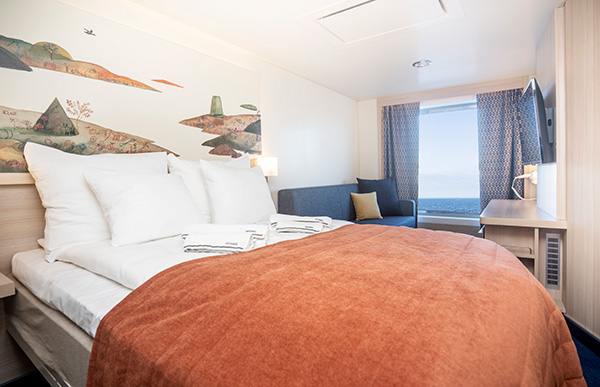
Moreover, there is a dynamic air conditioning
and lighting system onboard,
which has a direct effect on energy consumption.
This system is controlled by the
booking system: if a cabin remains empty
at departure, it will be set in a power-saving
mode, thereby minimising air-conditioning
and heating for that particular cabin.
On board Viking Line’s vessels, great
focus has traditionally been placed on
recycling – and that is also the case for
Viking Glory. Dani Lindberg says that the
ship recycles glass packaging, scrap metal,
paper and cardboard.
“Recycling the metal in cans uses 75
per cent less energy compared to producing
new iron ore. On board Glory, food
waste is also collected and used in biogas
production,” he says.
by: Sami J. Anteroinen
photos: Viking line, photographer: Tuukka Ervasti
VIKING GLORY – FAST FACTS
Length: 222,55 m
Width: 35 m
Cruising Speed: 22,1 knots
GT: 65,211
Route: Turku-Mariehamn/Långnäs-Stockholm
Class: DNV
Flag state: Finland
Passanger capacity 2,800
Crew: 200
Cabins: 922
Laner meters: Freight 1500 m, 464 passenger cars on deck 3 and 4,
and 120 passenger cars on deck 5



